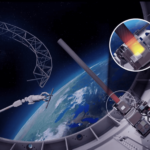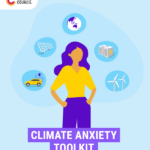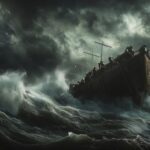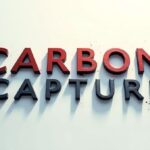
On my honeymoon drive with my new bride across Canada in 1973 we visited the Columbia Icefield’s Athabaska Glacier. It was an imposing sight that in June was creating a microclimate as we felt its icy wind and got pelted by rain and sleet originating from the frozen and very white surface. That was my first encounter with an alpine glacier.
Six years later on a cruise up the Inside Passage from Vancouver, British Columbia to Glacier Bay in Alaska, we visited the Juneau Icefield and Mendenhall Glacier, another landmark and what seemed to be a permanent fixture of the West Coast landscape.
Having seen current pictures of both ice fields and glaciers, the changes since our visits back then have been astonishing. Both glaciers have retreated over the past four decades. They were mostly white back then. Now they have a layer of gray and brown dust covering their surfaces and look nothing like what we saw.
Alpine glacier thinning is happening across the planet. From 1980 to 2018, the cumulative thinning equals a vertical loss of 24 metres (nearly 80 feet) per glacier. It, therefore, is no surprise to see articles being published on this subject and two in particular referring to the glaciers we visited so many years ago.
They were incredible sights. The Athabasca stretched almost to the edge of Alberta’s Icefields Parkway, a roadway that skirts the Rocky Mountains for 232 kilometres (almost 144 miles) with breathtaking scenery every few miles. I remember we stopped often to witness rushing torrents of water tumbling down mountainsides or view spectacular valleys with mountain peak backdrops. The glacier itself was a startling white with hints of blue in the cracks at its face. Today it is covered in a layer of dirty snow and has retreated far from the roadway.
The Mendenhall didn’t make the same kind of impression on us because to see it we had to get off our ship and take a bus to a viewing area far from the front of the glacier. It was beautiful to see but far more spectacular was Glacier Bay where our ship wandered while we came face-to-face with calving glaciers tumbling icebergs into the Pacific Ocean.
The articles I have been reading about glaciers in retreat related to global warming have looked at the icefield plateaus of the Himalayas, the glaciers of the European Alps, the disappearing ice on Mount Kilimanjaro in Africa and the ice sheets of Antarctica and Greenland.
Athabasca Glacier and Columbia Icefield Current Status
A 2017-published Cambridge University study looked at changes to the Columbia Icefield from 1919 to 2009. It noted that the field feeds 25 glaciers of which the Athabasca is the one most visible and most often visited.
Results from land-based and satellite measurements show “substantial recession and mass loss” for all 25 glaciers. The losses have not been consistent across the entire period with some decades showing acceleration and some not.
Overall, however, the trend is downward.
Mendenhall Glacier and Juneau Icefield Current Status
This week I read a Newcastle University-led team article published in Nature Communications looking at the rate of ice loss from the Juneau Icefield. The period of study goes back to the first sightings of the Mendenhall Glacier, one of more than a thousand that the Icefield feeds. Juneau measurements date back to 1770. This study accumulated 250 years of data ending in 2020 and concluded that the Icefield had lost a quarter of its mass.
The Juneau is a plateau icefield. In the 250 years, 63 of the glaciers it feeds have melted away. Since 2005, the melting on the field has accelerated the loss by 10%. Ice volume losses are expected to be steady until 2040 and accelerate after that as more land under the melting ice gets exposed accelerating the albedo effect.
The Albedo Effect on the Athabasca and Mendenhall Glaciers
The term “albedo effect” refers to the nature of how light interacts with reflective and white surfaces. A glacier or icefield with fresh snow and ice reflects light. A photon of light when it reaches the ice surface bounces off and is reflected into space.
A darker surface such as that which happens when glacial ice melts and exposes exposed underlying rock absorbs the energy from photons converting it to heat.
Icy, light surfaces stay cold because of the albedo effect. Exposed dark surfaces warm up because of the albedo effect. Both create feedback loops. The ice tends to cause more ice while the warming accelerates more warming.
One thing is certain. Atmospheric warming combined with more exposed dark surfaces will cause alpine glaciers like the Athabasca and Mendenhall to keep melting. Dr. Bethan Davies, Senior Lecturer, at Newcastle University and the Juneau study lead believes that alpine glaciers are being pushed beyond the “tipping point into irreversible recession.” She believes that “current glacier projections may be too small and underestimate glacier melt in the future.”
How much will alpine glaciers contribute to the rise in sea levels? As more water from melting alpine glaciers eventually gets to the ocean it will make its contribution. It should be noted, however, that as glaciers melt, the land underneath them experiences a phenomenon called isostatic rebound. When the weight of the ice is removed from the land beneath, it rises.
Isostatic rebound is still occurring in North America, 10,000 years after the last Ice Age ended. A good example is areas from the Ohio River Valley to the Great Lakes and St. Lawrence River Valley continue to rise. As this land rises it is causing Tidewater Virginia, Maryland and the Chesapeake Bay region to tilt downward. That’s why sea level rise is faster along the Chesapeake shoreline than other areas along the Atlantic Ocean’s Eastern Seaboard.
As alpine glacier ice melts, the bigger impact will not be on sea levels. It will be on the river systems that flow from the water stored in the icefields that feed them. Rivers originating from the Rocky Mountains like the Columbia, Fraser, Bow, North and South Saskatchewan will see water volumes impacted by disappearing alpine glaciers.
Melting polar ice sheets and sea ice and the thermal expansion of the ocean will likely be far greater contributors to future sea levels.








